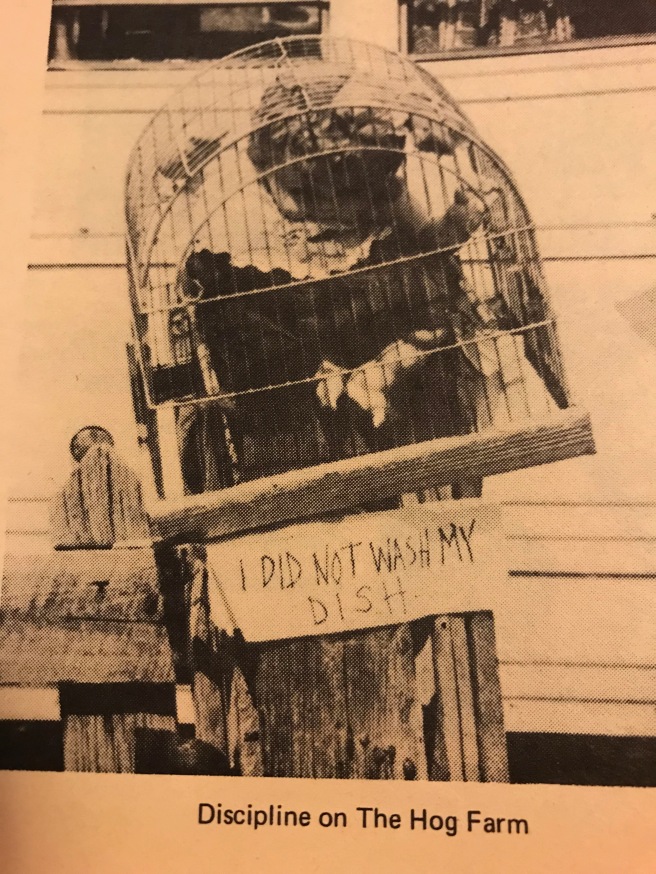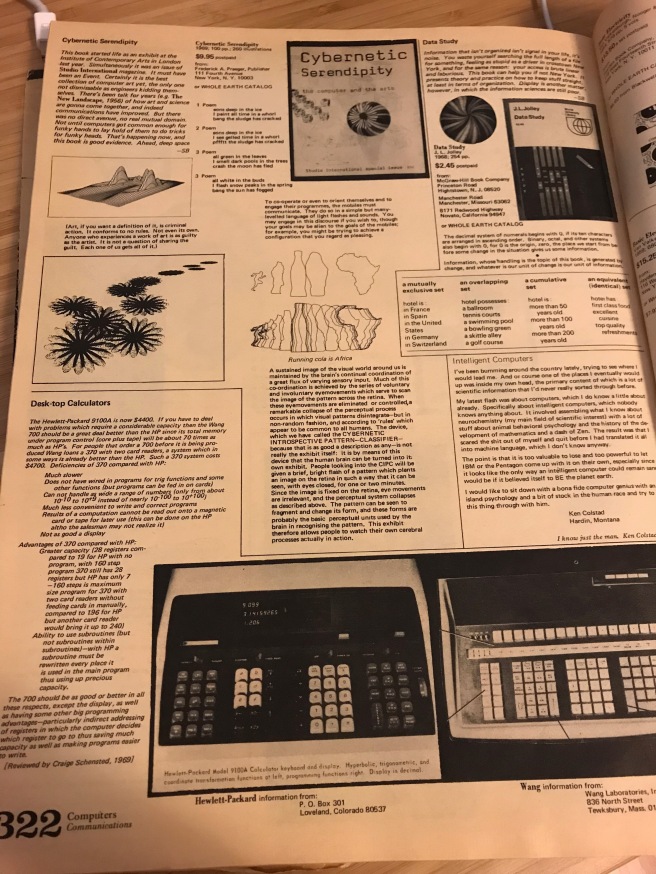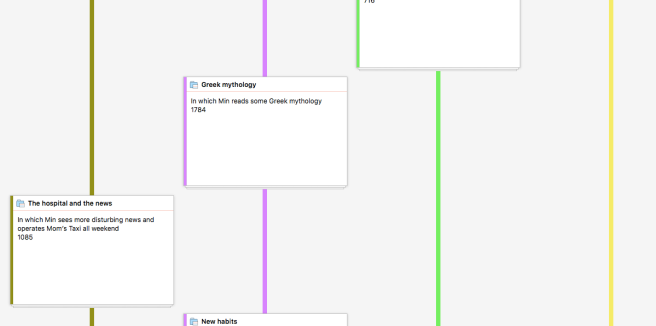I’ve always wanted to be a writer, but even now that nothing stands in my way, I’m still struggling to get my current project finished. Can I use the power of habit to help me get where I want to go?
Gretchen Rubin would say yes. She wrote a whole book, Better than Before, about using habits to make your life better. Charles Duhigg, author of The Power of Habit, would agree.
Here’s the thing about habit: it lets you make a decision once and be done with it. No dithering about whether or not to brush your teeth or make the bed; the decision is already made. No arguing with yourself about whether to order french fries or a salad at lunch. No choosing between writing and doing something else.
Once a habit’s established, all you have to do is go with the flow.
Know yourself
Self-knowledge is key to establishing good habits. If you’re creative at midnight but a zombie before 10 a.m., maybe getting up extra-early to write isn’t going to work for you. If you enjoy starting new things more than finishing what you’ve started; if you like novelty more than familiarity; if you prefer simplicity to abundance – use that knowledge to figure out the best approaches and incentives.
If you’re one of Rubin’s “upholders” you follow through on whatever you expect of yourself, so it’s most important to design your new habit wisely. If you fit her “obliger” category you might need to set up external accountability to keep you on track till your habit’s ingrained. A “questioner” needs a good reason for doing anything, so clarifying your ‘why’ is critical. (Check out her newest book, The Four Tendencies, for more on applying her theory to your life.)
The structure of habit
Habits can be changed if we understand how they work, says Duhigg. It’s pretty simple: cue, routine, reward. When we encounter the cue, our brain checks out, our basal ganglia take over, and we execute the routine and get the reward. Once the habit is established, we anticipate the reward as soon as the cue shows up, creating a craving – this is why it’s hard not to check your phone when it buzzes; your brain is already salivating over the little boost it expects to get.
To form a new habit, choose a simple cue. Identify a reward that naturally flows from the new routine – maybe the satisfaction of seeing your word count climb, or the pleasure of reading what you’ve written, or the attaboy your accountability partner gives you – and allow yourself to anticipate the reward, really feel it, to help build that craving.
You can’t extinguish an old habit, but you can change it: keep the cue and reward, change the routine. If the cue is opening the laptop and the routine is checking social media or reading email, figure out the reward you get out of those distracting activities and find a way to link that reward to writing instead.
(In The Power of Habit, Duhigg lays out the neuroscience behind understanding how the brain does this, as well as how habits apply to organizations and societies. I highly recommend reading his book.)
Strategies for habit formation
Better Than Before lays out concrete steps to improve the odds that you’ll succeed at forming good habits and changing bad ones.
Monitoring – It’s an axiom: what gets measured gets done. Track your behavior, as in WW where you track your food, or your results, as in NaNoWriMo where you track your word count, and you’re more likely to succeed. I started using a spreadsheet when I read Gabriela Pereira’s DIY MFA. She suggested doing it for a month or so to figure out what time of day, location, etc. made you the most productive, but I’ve kept it up because it gives me a little boost every time I get to say I met my goal for the day. I have columns for date, daily goal, whether I met the goal, start/end/elapsed time, start/end/total words added, location, mood, and notes about who I was with and what I worked on.
Foundation – Good habits related to sleep, exercise, nutrition, and clutter make it easier to do everything else. If you’re chronically exhausted, it’s harder to make good choices. The siren call of unwashed dishes can make it impossible to concentrate (when I was a student, my apartment was never cleaner than during finals week when my subconscious was actively seeking distraction).
Scheduling – If you can do it anytime, you might never get around to it, but choosing a time and putting it on the calendar gets it done. At the moment, my only consistent writing times are Friday mornings, when I meet some people at a coffee house after my workout. I do much better with exercise, because the yoga class I like is at noon on Mondays, and my strength sessions with a trainer and a workout buddy are scheduled on Tuesdays, Wednesdays, and Fridays.
Accountability – Reporting to someone else, or even to something else like an app, helps reinforce good habit formation. My writing critique group meets every Thursday, and every three weeks I need to produce a chapter for them to comment on. The 10 Minute Novelist group on Facebook has a 365-day challenge every year that gently nudges you to keep up the good work.
First steps – Try taking it one day at a time. Take a deep breath and jump in.
Clean slate – Look for a new beginning on the calendar (New Year, first day of school) or in your circumstances (new house, new job) and start your new habit when everything else already feels new.
Lightning bolt – Take advantage of an aha moment, like a book that changes the way you think, to kick-start a new habit.
Abstaining – It might be easier to never yield to temptation than to do things in moderation. Uninstall the distracting game from your phone, for instance.
Convenience – Make it easier (or make the bad habit harder). Turn off notifications, close your browser and email programs, maybe even use one of those productivity tools that forces you to jump through hoops to open a distracting app. End your writing session in the middle of a scene so when you start next time you’ll have a head start.
Safeguards – Anticipate and minimize the temptations that will derail you. Put distractions where you won’t see them. Write at the library where you can’t stop to put another load of laundry in. (There’s something about housework that’s infinitely fascinating when I’m stuck.)
Recognize loophole-spotting – I surpassed my goal yesterday, so I can take today off. I had a hard day (I did the taxes, I dealt with the plumber) so I deserve a break. It’ll be easier to write if I take care of this email first. I’m traveling so it doesn’t really count. As Duhigg said, your old habits are lurking under the surface. Don’t give them a foothold.
Distraction – Give yourself 15 minutes before getting up from your desk, and see if the urge to go do something else fades. At the very least, you’ve spent another 15 minutes on your writing.
Reward – Don’t link your habit to an unrelated reward. You risk teaching your brain that you wouldn’t do the activity without the reward, converting it to unpleasant drudgery. You also risk stopping when you reach the finish line and earn the reward.
Instead, find the intrinsic motivation that works for you and for the habit you’re trying to form. These might include challenge, curiosity/learning something new, control/feeling of mastery, fantasy/using your imagination, cooperation/working with others, competition, or recognition.
Treats – Allow yourself small pleasures just because you want them. This helps you feel cared for and contented, and strengthens your ability to maintain good habits.
Pairing – Link your new habit to something you already do. I always have coffee as soon as I wake up; I’d write more consistently if I took the coffee into my home office and wrote while I drank it.
Clarity – Figure out why you want the new habit. I have to do this with writing a couple of times a year. Writing a novel is hard; why on earth would anyone put themselves through the agony? In addition to clarifying your why, clarify the specific actions in the new routine. My Friday writing habit is pretty loose – show up at the coffee house and spend a few hours planning, editing, drafting, and/or researching, plus a little mostly-writing-related chatting – but it clearly excludes social media and reading for fun, so it works.
Identity – Defining yourself as a writer makes it easier to maintain writing-related habits. We tend to believe what we hear ourselves say.
For a quick take on 10 tips for habit formation, check out this video:
Co-posted on my personal website, shanhays.com. Please visit me there for book reviews and more.







